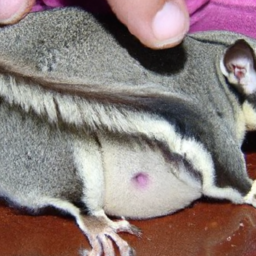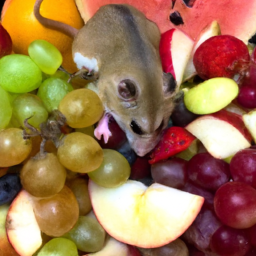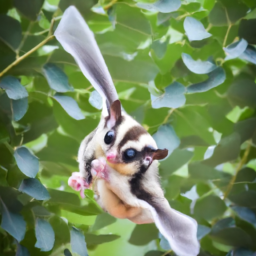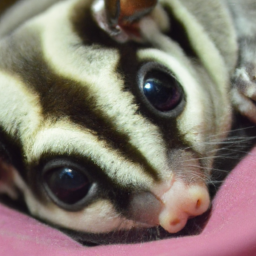How To Tell If My Sugar Glider Is Pregnant
Hey there! Curious to know if your sugar glider is pregnant? Well, you’ve come to the right place! In this article, we’ll walk you through some signs to look out for that can help you determine if your furry little friend is expecting.
So, if you’re eager to learn more about how to tell if your sugar glider is pregnant, stay tuned! We’ll cover everything from physical changes to behavioral cues that can indicate a pregnancy. By the end of this article, you’ll have a better understanding of what to look for and how to care for your pregnant sugar glider. Don’t worry, we’ve got you covered!
How To Tell If My Sugar Glider Is Pregnant
Are you a proud owner of a sugar glider? If so, you may find yourself wondering if your furry friend is expecting little ones. Sugar gliders are unique marsupials that have a pouch where their young develop after being born. Identifying the signs of pregnancy in sugar gliders can be an exciting and crucial process to ensure the health and well-being of both the mother and her potential joeys.
Physical Changes
One of the first things you may notice if your sugar glider is pregnant is the growth of her abdomen. As the joeys grow inside her pouch, her belly will become noticeably larger. This expansion is a clear indication that she is carrying young. Keep in mind that sugar gliders have a pouch that is located on their stomach, so it is easier to observe this physical change compared to other animals.
Another physical change to look out for is nipple enlargement. The mammary glands in a pregnant sugar glider will increase in size to prepare for lactation. You may notice that the nipples become more prominent and may even protrude slightly. This is a reliable sign that your sugar glider is expecting.
Weight gain is also a common occurrence during pregnancy. As the sugar glider’s body prepares to nurture her joeys, she may gain some extra weight. A healthy weight gain is expected and should not cause concern unless it becomes excessive. Monitoring your glider’s weight regularly can help you track any significant changes.
Behavioral Changes
Aside from physical changes, there are also noticeable behavioral changes that can indicate pregnancy in sugar gliders. One of the first signs to watch for is changes in appetite. A pregnant sugar glider may exhibit a decrease or increase in her food intake. Some gliders may experience a loss of appetite during pregnancy, while others may become voracious eaters. These changes are normal and may vary from glider to glider.
Nesting behavior is another behavioral change to be aware of. As the due date approaches, a pregnant sugar glider will start displaying nesting behaviors. She may gather materials such as paper, fabric, or leaves to build a cozy nest inside her habitat. This nesting instinct is an innate behavior that mother gliders have to prepare a safe and comfortable environment for their joeys.
Another indication of pregnancy is decreased activity. You may notice that your sugar glider becomes less active and spends more time resting or sleeping. This change in behavior is a result of the physiological changes happening inside her body. It is important to provide her with a peaceful and quiet space during this time.
Visual Signs
If you are keen on observing your sugar glider’s physical appearance, there are a few visual signs to look out for. One of these signs is visible embryo movement. As the joeys develop inside the pouch, you may be able to see slight movement through the glider’s skin. This can be an exciting moment for glider owners as they witness the new life growing before their eyes.
Another visual sign of pregnancy is the visibility of mammary glands. As mentioned earlier, the nipples become enlarged during pregnancy. You may notice the appearance of pink or slightly swollen nipples. This change indicates that the glider’s body is preparing for lactation and the eventual arrival of the joeys.
Furthermore, pregnant sugar gliders may exhibit a “shadowing effect.” This occurs when the fur around the abdomen area appears darker or discolored compared to the rest of the body. This darkening effect is caused by the increased blood flow in preparation for the nourishment of the developing joeys.
Breeding History
If you suspect that your sugar glider is pregnant, it is essential to consider her breeding history. Have you recently observed breeding behavior between your gliders? Sugar gliders are known for their unique mating rituals, and if you have witnessed the male glider courting the female, chances are she may be pregnant. Breeding behavior can include vocalizations, scent marking, and even physical interactions between the gliders.
Another source of confirmation can be the breeder. If you obtained your sugar glider from a reputable breeder, they should have knowledge of the breeding history of the glider. Reach out to the breeder and inquire about any potential pregnancies that your glider may have experienced before coming into your care.
Physical Examination
If you want to be absolutely certain about your sugar glider’s pregnancy, consulting with a veterinarian is highly recommended. A vet checkup can provide valuable insights and ensure your glider’s health and well-being. During the checkup, the vet may perform a physical examination to palpate the abdomen.
Palpation of the abdomen involves gently feeling the glider’s belly to identify any lumps or bumps. An experienced veterinarian can detect the presence of joeys inside the pouch. However, keep in mind that this method might not be foolproof, especially if the glider is in the early stages of pregnancy or if she is not cooperative during the examination.
Additionally, an ultrasound scan can be performed to confirm the pregnancy. This non-invasive procedure allows the vet to visualize the presence of developing joeys inside the pouch. The ultrasound scan provides a more accurate and definitive confirmation of pregnancy.
Hormonal Changes
Hormonal changes occur within the body of a pregnant sugar glider, and these changes can be indicators of pregnancy. One hormone to consider is progesterone levels. During pregnancy, progesterone levels increase significantly to maintain the gestation period. Testing the hormone levels can be done through a blood test performed by a vet.
Estrogen levels also increase during pregnancy. Estrogen plays a crucial role in the development and maintenance of the reproductive system. Testing for estrogen levels can provide additional evidence of pregnancy in sugar gliders.
Furthermore, the presence of relaxin hormone can indicate pregnancy. Relaxin is produced by the glider’s body to help relax the muscles and ligaments, making it easier for the pouch to expand and accommodate the growing joeys. Testing for relaxin hormone can be done through a blood test.
Vocalizations
Pregnant sugar gliders may exhibit different vocalizations compared to their non-pregnant counterparts. One unique sound that pregnant gliders make is a clicking sound. This clicking sound is often described as a soft and rhythmic noise that the glider creates with its mouth. It is believed that this sound is a way for the pregnant glider to communicate with her unborn joeys.
Another vocalization that pregnant gliders may make is soft chirping or purring. These sounds might be less frequent than the regular sounds your glider makes, and may only occur during specific times or situations. Paying close attention to these vocalizations can give you insight into your sugar glider’s pregnancy.
Another behavioral change to be aware of is increased vocalization. Pregnant sugar gliders may become more talkative than usual. This can include making more noises, chirping, or even louder barks. This increased vocalization is believed to be a way for the glider to communicate her needs and emotions during pregnancy.
Urinary Changes
Changes in a sugar glider’s urine can also indicate pregnancy. One change to look out for is increased urination frequency. Pregnant gliders may urinate more frequently due to the hormonal changes happening in their bodies. However, it is important to note that increased urination can also be a sign of other health issues, so it is essential to consult with a veterinarian for proper diagnosis.
The color or consistency of the urine may also change during pregnancy. The urine may appear darker or have a stronger odor. These changes are a result of the physiological changes happening inside the glider’s body and can provide additional evidence of pregnancy.
Additionally, the presence of glucose in the urine can be an indication of pregnancy. Glucose levels tend to increase during pregnancy due to the metabolic changes happening in the glider’s body. Testing the urine for glucose can be done at a veterinary clinic.
Social Behavior
Observing changes in social behavior can also give you hints about your glider’s pregnancy. One common social behavior change is separation from the male glider. Pregnant sugar gliders may exhibit more independent behavior and show less interest in interacting with the male glider. This separation can be seen as the mother glider preparing for the arrival of her joeys and focusing on her own needs.
On the other hand, pregnant sugar gliders may display increased bonding with other gliders in the colony. They may seek the company of their fellow gliders or spend more time grooming and interacting with them. This behavior is believed to provide support and companionship during the pregnancy.
Irritability or aggression can also be observed in pregnant sugar gliders. Hormonal changes can influence their behavior and make them more prone to mood swings and irritability. If your glider becomes more aggressive or exhibits unusual behavior, it is important to give her space and avoid handling her too much during this time.
What Are the Signs of Pregnancy in Sugar Gliders?
Sugar glider pregnancy timeline can be tricky to determine, but common signs include weight gain, pouch enlargement, and changes in behavior. If you notice these indicators, it may be time to consult a veterinarian who is familiar with sugar gliders to confirm the pregnancy.
Should I be Concerned About My Sugar Glider’s Pregnancy if It Has Escaped?
If your sugar glider escaped, tips for finding her quickly are important. If she’s pregnant, it’s crucial to locate her as soon as possible to ensure her safety and the smooth progression of her pregnancy. Keep an eye out for her in small, cozy places and make sure she has a safe, warm environment.
Conclusion
Identifying the signs of pregnancy in sugar gliders can be an exciting and rewarding experience for glider owners. By combining multiple signs, observing the physical and behavioral changes, and consulting with a veterinarian, you can determine if your sugar glider is indeed pregnant.
Remember, each sugar glider is unique, and pregnancy experiences may vary. It is vital to be patient and provide proper care and attention to your glider throughout her pregnancy journey. If you suspect your sugar glider is pregnant, consult with a veterinarian who has experience in exotic pets to ensure a safe and successful pregnancy.
Prepare yourself for the joy of witnessing the arrival of new joeys and embrace the wonder of motherhood in your sugar glider’s life. Happy gliding!






